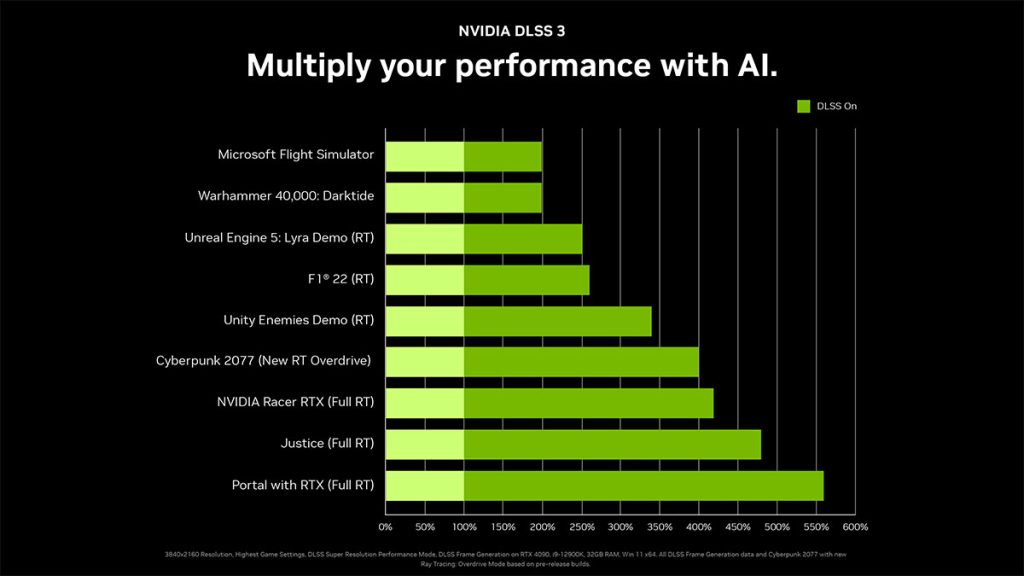
NVIDIA DLSS 3 improvements will benefit all GeForce RTX GPUs
NVIDIA made huge waves in the gaming scene when they announced the latest GeForce RTX 40 series. Along with the new Ada Lovelace GPUs, they also announced DLSS 3. And then there was quite a bit of furor over the fact that DLSS 3 is only available for the GeForce RTX 40 series. This is technically true, although there’s actually more to it than just NVIDIA leaving their older GPUs out in the cold.
DLSS 3 is made up of three main components

If you read NVIDIA’s announcement more carefully, you might have spotted this. While GeForce RTX 40 series users will get the most out of DLSS 3, everyone with a GeForce RTX GPU will benefit from advances made in DLSS 3. This is because DLSS 3 comprises of three main components: DLSS Super Resolution, NVIDIA Reflex and DLSS Frame Generation.
Any improvement made towards the AI models that make up the backbone of DLSS Super Resolution will be available to all GeForce RTX gamers. And of course, NVIDIA Reflex is available to all since the GeForce GTX 900 series. In short, the adoption of DLSS 3 will benefit every GeForce RTX gamer out there today.
DLSS Super Resolution will still be used to upscale up to 75% of each frame. NVIDIA Reflex will still be available to lower overall system latency and raise performance. You essentially already get 2/3rds of the benefits of DLSS 3, even with the older GeForce RTX 20 series cards.
DLSS Frame Generation is what you will be missing out if you don’t upgrade to GeForce RTX 40 series GPUs. DLSS Frame Generation takes advantage of Ada Lovelace’s Optical Flow Accelerator (OFA) to generate an entire second frame with the power of AI. This also reduces the effect of CPU bottlenecks, as NVIDIA showcased with 2X higher frame rates in Microsoft Flight Simulator.

In combination, DLSS 3 can raise performance by up to 4X, depending on the game. So yes, you do get the most out of DLSS 3 with a GeForce RTX 40 series GPU. NVIDIA has claimed over 35 games and applications will support DLSS 3, with the first arriving in October, just in time for the GeForce RTX 40 series to land.

So, in short, DLSS 3 games will still support DLSS 2 by default. NVIDIA has committed to improve the AI for DLSS Super Resolution, which is supported on all GeForce RTX GPUs. And as more game publishers sign up, you get to enjoy DLSS’ performance improvements in more games. Isn’t it incredible?











[…] (XMX) that enable XeSS support. While we have yet to see it in action, it should be close to DLSS, instead of simple upscaling with AMD FidelityFX Super […]
[…] DLSS 3 is a major part of the 5th Gen Max-Q suite, but it doesn’t end there. NVIDIA is focusing their attention on lowering memory power consumption, with a trio of solutions to reduce the memory consumption. Firstly is Ada High Efficiency On-Chip Memory, which is just NVIDIA being funky with the way they call cache. It’s up to 16X larger, 2X the bandwidth of Ampere, and features enhanced clock gating for lower power draw. A larger cache means that the GPU will have to access the VRAM less, which can save a significant chunk of power. […]